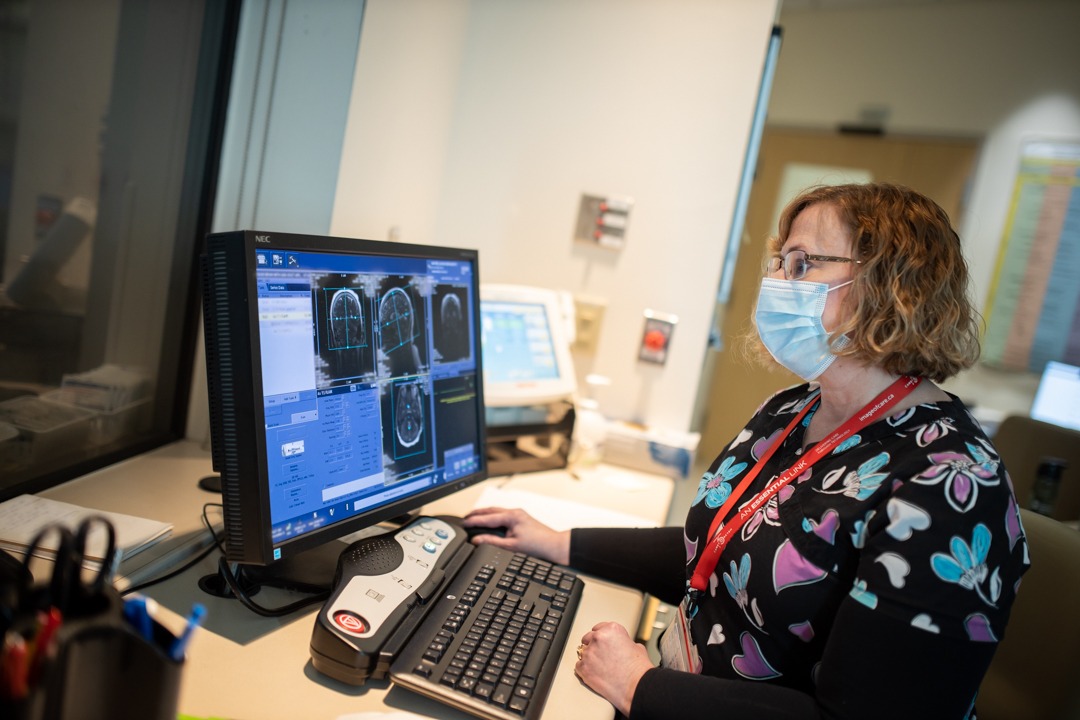
Introducing a sonographer
This profile is part of our Introducing MR Tech series to highlight the work of our diagnostic imaging unit.
When Bosa Manojlovic was a student in the Mohawk College-McMaster University Medical Radiation Sciences collaborative program, she knew she wanted to work for Hamilton Health Sciences (HHS). “As a student, I always wanted an HHS placement because Hamilton is home,” Manojlovic says. “I began working at a private clinic within a year of graduating, then joined HHS in 2015.”
Manojlovic is a sonographer at HHS’ Juravinski Hospital and Cancer Centre (JHCC). We asked her some questions about her role in the ultrasound department, some of the challenges about her job, and advice for anyone who’s interested in entering her line of work.
What was it about ultrasound that attracted you to this field?
I knew I wanted to work in the medical field and I liked the idea of ultrasound because there’s a lot of variety in what we do. I had thought about nursing, but I leaned towards ultrasound because I’d get the chance to learn more about medical technology and human anatomy. There’s a different kind of one-on-one interaction with patients.

Manojlovic sits in front of a stationed ultrasound machine. She says patients are grateful to still have appointments during the pandemic.
Describe your role and how it differs from your previous work at a private clinic.
It’s a little bit different working in a private clinic than in a hospital. In a hospital setting, we see a lot more complex pathology – scanning and helping to diagnose diseases. With clinics, there’s a lot more routine scanning.
What are some of the challenges that come with being a sonographer?
Some people may not realize how physically demanding our work is. For each exam, we are constantly leaning our body and pushing the ultrasound probe. We sometimes require patients to hold their breath during an exam in order to produce the best possible images, and some patients aren’t able to do that. Our goal is to produce a better quality exam for the radiologist, which in turn leads to a more accurate diagnosis.
Another difficult part of our job is during an exam when we visualize what could be an unexpected mass or an unexpected fetal demise. We have to maintain conversation and an unchanged facial expression. It’s a lot of pressure because we care about every single one of our patients. Many times our patients ask us for results, but we cannot provide those answers. That’s the responsibility of the radiologist or physician. The radiologist writes a report based off our images, then sends to the ordering physician. There are times when the radiologist comes in during an ultrasound to talk to the patient and gives results, but it is usually the ordering doctor notifying the patient.
Is there a patient or patients who have made you grateful to be in your position of work?
Patients know when they are being well cared for. They can also tell when someone is smiling at them, even while wearing a mask. Every exam is face to face, so we have the opportunity to chat with patients and share a smile with them. At least a few times a week I hear, “Thank you for coming into work and doing a good job, especially during these hard times.” A simple thank you from a patient makes my day. I feel very grateful to be in my line of work.
What’s your advice for someone who’s considering entering the same field?
Healthcare never stops. It is a 24/7 around-the-clock job. Sonographers have shift work, including on-call as well as holidays.
There are so many different types of ultrasound exams to perform. Some of the ultrasound exams you’ll scan are abdominal, gynecological, obstetric, and vascular just to name a few. Working at JHCC, we see many oncology patients. Ultrasound is a mentally stimulating career. It’s very rewarding.



